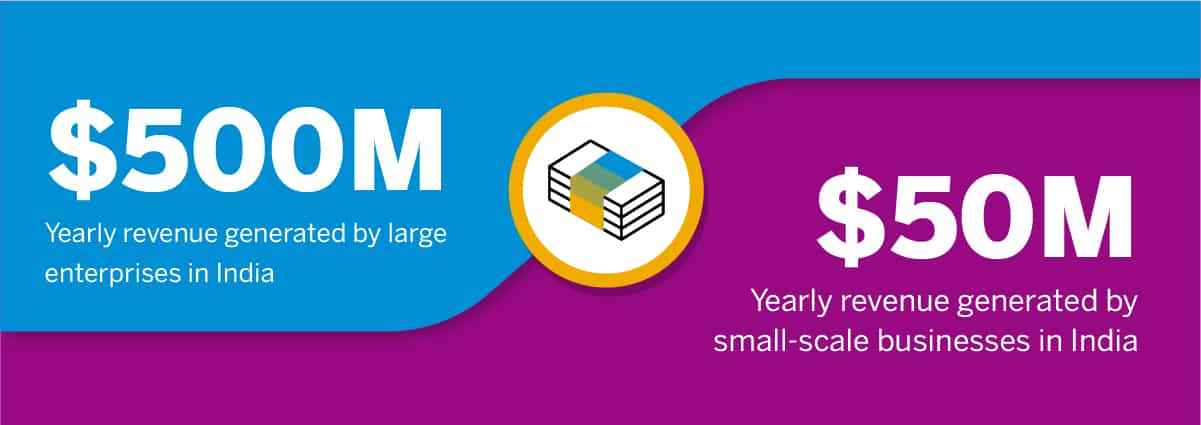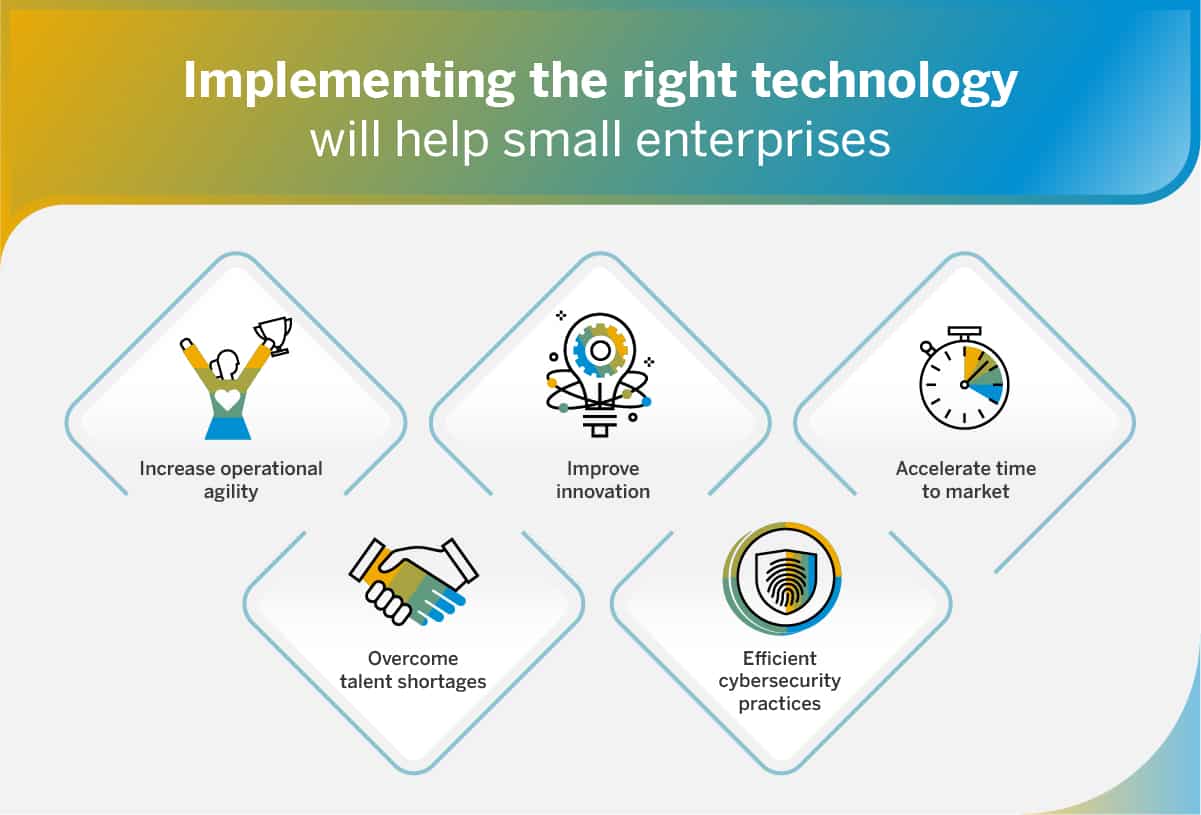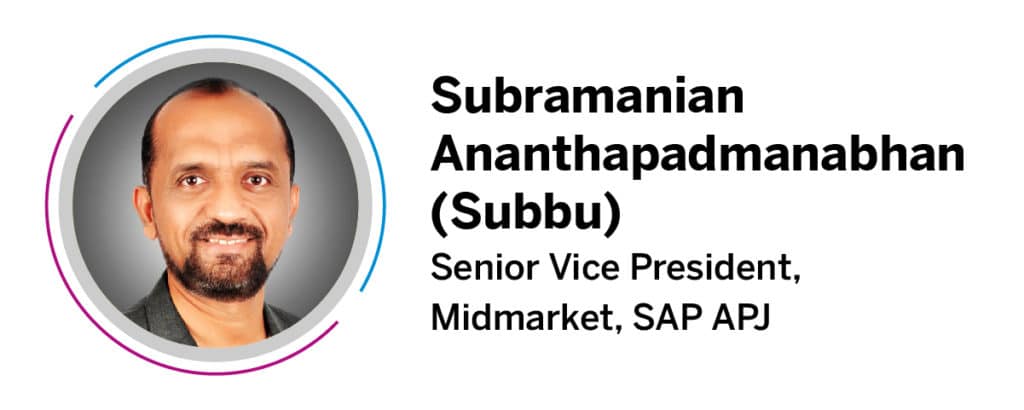India has 600 large Midmarket enterprises with over $500 million in yearly revenue, and thousands more small businesses generating under $50 million a year. In between is a gap (the missing middle), challenging the economy’s ability to maintain growth.
By Subramanian Ananthapadmanabhan, Senior Vice President and Head of Midmarket Business, SAP Asia Pacific Japan (APJ)
The pandemic and current geopolitical landscape are creating considerable disruptions across the global supply chain ‒ and for India, its business community could soon face rising demand for components and materials such as chemicals, electronics, semiconductors, and batteries.
While large enterprises have the operational and financial flexibility to cater to this surge, there aren’t enough of them in the Indian corporate sector to optimize its response. This, in turn, opens the door to a remarkable opportunity for the nation’s tens of thousands of smaller businesses to step into – not only to cater to the domestic market but also central to fulfilling India’s national ambitions of becoming a globally competitive player.
Fostering growth in the right places
Today, few firms populate the Indian economy’s most vital and dynamic segment ‒ “the missing middle“. The nation currently has 600 large Midmarket enterprises with over $500 million in yearly revenue, and thousands more small businesses generating under $50 million a year. And in between is a gap in competitors (the missing middle), challenging the economy’s ability to scale up and maintain a trajectory of ongoing growth quickly.

To fill the vacuum of the missing middle, there is an immense opportunity for thousands of companies to rise from being small to midsize with the intention to grow into large Midmarket enterprises over time. Then, additional firms can move up as well, creating a dynamic marketplace that fosters innovation and adapts to change quickly to fuel meaningful financial progress.
To make that leap, businesses need to adopt a digital strategy. The IDC Info Brief, sponsored by SAP, reported that 68% of midsize companies in India intend to retain or increase IT spending between 5% and 10%, prioritizing employee and customer engagement, security, and modernization to improve processes.*

Raising the game with Digital Innovation
The IDC finding makes it clear that midsize companies across India understand that technology is vital to their business continuity and resilience. With the right technology investments, they can increase operational agility, improve innovation, and accelerate time to market while overcoming significant challenges in talent shortages and cybersecurity. More importantly, cognitive capabilities, such as artificial intelligence (AI) and predictive analytics, can be embedded into applications to deliver enhanced employee and customer experiences.
Take, for example, Lumax. The leading innovator in automotive lighting replaced its paper-based HR processes with integrated, cloud-based HR technology to make work more personal, satisfying, and empowering for its 9,000 employees. The digital transformation effort delivered a secure and stable system that eliminated information silos locked in e-mails, spreadsheets, and disconnected systems and established a single, self-service destination for employees to access HR, payroll, and learning resources.
In addition, employees, regardless of role, can gain new insights to expand on Lumax’s legacy of innovation. As a result, organizational compliance efforts, including payroll and purchase taxation, are more streamlined. More impressively, Lumax’s application of AI and industrial psychology to measure employee talent and make predictive talent decisions is helping the organization run more intelligently and improve the overall employee experience.
While technology adoption can help small and midsize or midmarket businesses gain a competitive advantage similar to that of Lumax, they must overcome challenges such as cybersecurity, the availability of digitally fluent talent, and in some cases, the cost of adopting and integrating new technology into the existing infrastructure. Even though freeing up capital is a substantial hurdle for many firms, digital transformation is no doubt a priority for getting operations back to normal.
According to IDC, nearly three-quarters of surveyed Indian midsize companies have planned or are planning to move to the cloud. The key to overcoming the cash crunch is migrating to a hybrid cloud environment. Nearly half of the respondents favored the agility, performance, and availability of matching the targeted workload to a public or private cloud. In addition, 11% preferred the flexibility to interoperate applications across different clouds as needed.*

Eliminating the missing middle
India has an ambitious goal to emerge as the hub that satisfies the world’s needs. This requires the nation’s companies to take immediate action and digitally transform themselves to take their place among midsize and larger competitors ‒ and eliminate “the missing middle” from India’s business vocabulary.
In 2022, SAP dedicated its energy and resources toward empowering small and medium companies throughout India to realize their full potential on the world stage with the Transformation Express initiative. In a journey spanning over 7,000 kilometers and 13 cities, SAP engaged over 10,000 businesses to see firsthand how cloud technologies can help prepare for a future of high-growth potential.
After this journey, starts the journey of the next million. The Transformation Express now premieres in the metaverse. Learn how to develop the right business models, gain efficiencies, fund innovations, and transform mission-critical systems with Transformation Express in the metaverse.

Source: Originally published by Forbes



